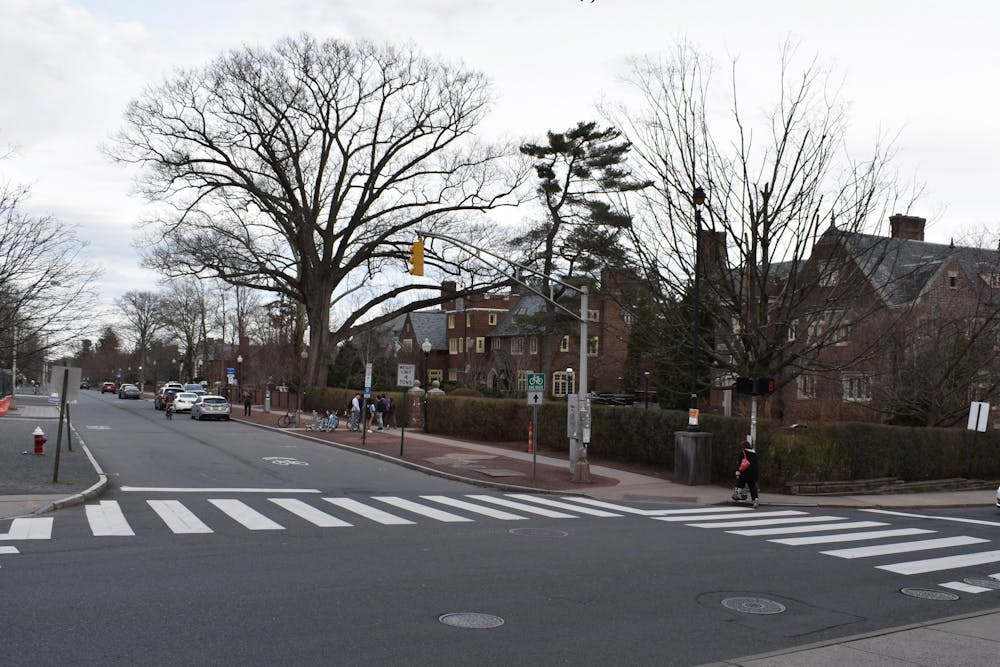In an unanimous vote, the Princeton Town Council approved the designation of Prospect Avenue as a historic district at its July 11 meeting.
The council previously discussed such a designation during the Council meeting held on April 11 and the decision follows the uncontested approval of this district by both the Princeton Planning Board, as well as an unanimous recommendation by the Princeton Historic Preservation Commission.
According to the original nomination report, submitted by the Princeton Prospect Foundation (PPF) as part of the months-long review process, the Prospect Avenue Historic District includes “sixteen grand clubhouses from the final stage of development, three houses from Prospect’s earliest development that later became residences of notable faculty” as well as a “monumental wall and gate representing the rise of college athletics and its connection to the eating clubs, and Princeton’s first major apartment building expanding faculty housing, all erected in period styles in the five decades from the 1890s through the 1920s.”
Clifford Zink, a historical preservation expert and author of the book, “The Princeton Eating Clubs,” was one of the leaders in the movement to create the Prospect Avenue Historic District.
“The purpose of the designation is not to freeze Prospect the way it is today,” he said at the July 11 meeting, “but rather to manage any future changes that the clubs and the University would like to make in a way that balances the property owner’s needs with the meaning and the significance that Prospect Avenue has for everybody in the town.”
For example, as part of an ongoing University project, trees are currently being planted on Prospect Avenue, and Court Clubhouse, a now-defunct eating club, will be moving across the street in September.
Conversation around creating the historic district dates back to the 1990s when a previous attempt to legislate such a district was raised, said Sandy Harrison ’74, the Board Chair of PPF, in an interview with The Daily Princetonian.
Harrison credits the successful creation of the Prospect Avenue Historic District this time around in part to the community buy-in that the PPF was able to foster throughout the petition process and during public meetings by “navigating all of the different organizations” and getting “enough publicity along the way.”

The historic district designation also aim to mark a recognition of the “rich and largely undocumented history of black employment and racial interactions in an era dominated by segregation,” according to the nomination report. The cultural history of the eating clubs reflect the integration of women and people of color into self-governed undergraduate social life, the report said.
For former Princeton Mayor Yina Moore ’79, the significance of Prospect Avenue is multi-dimensional. Her grandfather was among the many African-Americans employed by the eating clubs; her aunt developed a love for jazz while listening to bands at parties from the kitchens; and Moore herself studied the buildings as a student in the School of Architecture.
“It’s a place to celebrate,” she told the ‘Prince.’ “Of course, the positive experiences are outweighed by the social conditions of racial discrimination and disrespect that the many African American residents suffered as employees of the clubs. My father always reminded me that while it represented a good paycheck for his father and their family, it was earned at a great personal expense.”
For Councilmember Leighton Newlin, while the significance of the architectural preservation is obvious, he also noted in an interview with the ‘Prince’ that it is especially important to recognize the significance of the early Black community in Princeton, “who came here as indentured or slaves and built the infrastructure of both the University and the town itself.”

“It’s significant that the powers that be on Prospect Avenue and the people in charge of the eating clubs and the University are recognizing the contributions of African Americans who labored over many years in the clubs and provided sustainability, cleaning, cooking, and food preparation to the students who went to the University over many, many years,” Newlin said.
“It’s a noble gesture of them to hold the African American experience into the history of the eating clubs because for so many, we are kind of just an afterthought to the history of Princeton,” he continued.
On top of the historical significance, Councilwoman Mia Sacks sees the Historic District as a significant step forward in the relationship between the town and the University, as the move to create the historic district was part of a compromise after a year-long controversy surrounding the University’s planned changes to the state of Prospect Avenue.
“I think the lesson is that we can find ways to change things in the town while preserving the essential components of what it is that we value,” Sacks told the ‘Prince.’ “As a municipal official, it is a priority for me to help facilitate compromises that allow our institutional partners to meet their programmatic needs, while also preserving the historic character that makes Princeton special and unique.”
Cherry added that he hopes that students and visitors alike “will see the history of the eating clubs as both a reminder of the past and as an inspiration.”
Charlie Roth is a Staff News Writer and Assistant Data Editor for the ‘Prince,’ focusing on local town coverage. He can be reached at charlieroth@princeton.edu or @imcharlieroth on Twitter or Instagram.
Madeleine LeBeau is a Staff Writer for the ‘Prince.’ She can be reached at mlebeau@princeton.edu, on Instagram @madeleinelebeau, or on Twitter @MadeleineLeBeau.








